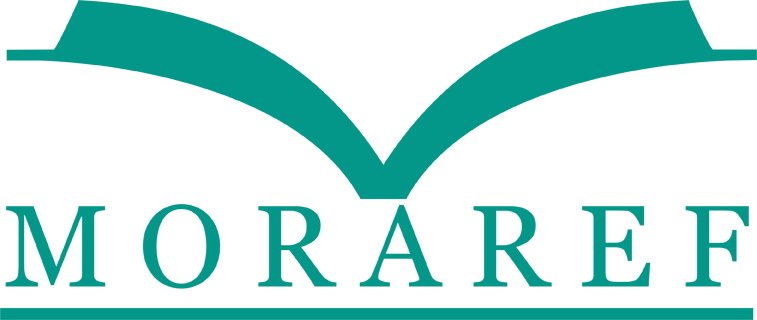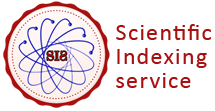The Relationship Between Formula Feeding Patterns and Early Childhood Caries In Preschool Children In Ketileng Village, Todanan Blora
Abstract
Caries that affects children under 72 months of age is called Early Childhood Caries (ECC). The high caries prevalence rate which reaches 81.5% in children aged 3-4 years is still a problem for Indonesia. One of the reasons for the high incidence of caries in preschoolers is the inappropriate pattern of breastfeeding or formula feeding. The purpose of this study was to analyze the relationship between patterns of formula feeding and ECC in preschool children in Ketileng Village, Todanan, Blora. This study used an analytic observational research design with a cross sectional approach. The research sample was 69 respondents using a purposive sampling technique. Data were obtained from the results of dental examinations using the PUFA index and a questionnaire filled out by parents/guardians of students. Data analysis used the chi square statistical test. The results of the study showed duration, duration, frequency of consumption of formula milk, use of bottles/pacifiers, addition of sweeteners to consumption of formula milk and history of breastfeeding up to 2 years of age, each of which showed a value of p <0.05, which means there is a relationship with ECC. The conclusion of this study is that there is a relationship between the pattern of formula feeding and the presence of ECC in preschool children in Ketileng Village, Todanan, Blora.
Keywords
Full Text:
PDFReferences
Razi, P., Surayah, and Widia, “Promosi Kesehatan Dengan Pola Asah, Asih Dan Asuh Dalam Meningkatkan Kemandirian Menyikat Gigi Pada Anak Usia Dini Di Tk Khalifah 2 Jambi Tahun 2019,” Ramanujan J., vol. 1, no. 2, pp. 7–12, 2020.
A. B. Zuqriefa, B. Widjanarko, and R. Indraswari, “Analisis Praktik Pemeliharaan Gigi Dan Mulut Balita Sebagai Pencegahan Early Childhood Caries Oleh Orangtua/Wali di Provinsi Jawa Tengah,” Jurnal Kesehatan Masyarakat (e-Journal), vol. 10, pp. 201–212, 2022, doi: 10.14710/jkm.v10i2.32661.
R. Syaputri, S. Deynilisa, and R. A. Zainur, “Pengetahuan Orang Tua tentang Waktu Pemberian Susu Botol terhadap Terjadinya Karies pada Anak Usia 2-5 Tahun,” vol. 2, no. 2, pp. 1–5, 2020.
N. Kotsanos, H. Sarnat, and K. Park, “Pediatric Dentistry,” in Pediatric Dentistry, 1th Editio., Switzerland: Springer Nature Switzerland, 2022, p. 283.
J. Kristianto, I. Yulita, N. M., “Pengetahuan Ibu Tentang Kebiasaan Minum Susu Formula Melalui Botol Dan Status Karies Gigi Susu Pada Anak Usia Prasekolah,” JDHT Journal of Dental Hygiene and Therapy, vol. 1, no. 47, pp. 50–54, 2020.
Hilmiah, S. Wahyuni Bahrum, S. Hardiyanti, P. Ayu, , “Hubungan Pola Pemberian Susu Formula Menggunakan Botol Susu Dengan Risiko Terjadinya Karies Gigi Pada Anak Usia 3-6 Tahun Di Wilayah Kerja Puskesmas Bontoramba,” Ojs.Stikes.Gunungsari.Id, vol. XIV, no. 2, pp. 1–8, 2021, [Online]. Available: https://ojs.stikes.gunungsari.id/index.php/JBK/article/view/66.
I. Fauziah and C. Arin Proborini, “Hubungan Konsumsi Susu Formula dengan Kejadian Karies Gigi pada Anak Usia Prasekolah di Desa Sringin Jumantono,” J. Stethosc., vol. 2, no. 2, pp. 117–126, 2022, doi: 10.54877/stethoscope.v2i2.857.
S. Z. Hafizhah, N. Probosari, and B. Prihatiningrum, “Gambaran Indeks def-t Karies Rampan dan Early Childhood Caries Pada Balita Usia 2-5 Tahun yang Mengonsumsi ASI dan Susu Formula di Desa Panduman, Kecamatan Jelbuk, Kabupaten Jember,” Padjadjaran J. Dent. Res. Students, vol. 6, no. 1, p. 44, 2022, doi: 10.24198/pjdrs.v6i1.34858.
E. Jingga, H. Setyawan, S. Yuliawati, F. K. Masyarakat, and U. Diponegoro, “Hubungan Pola Pemberian Susu Formula Dengan Kejadian Early Childhood Caries (ECC) Pada Anak Prasekolah Di TK Islam Diponegoro Kota Semarang,” J. Kesehat. Masy., vol. 7, no. 1, pp. 131–141, 2019.
Nursalam, Metodelogi penelitian ilmu keperawatan pendekatan praktis, Edisi 4. Jakarta: Rajawali Pers, 2017.
I. T. Notohartojo and L. Ghani, “Pemeriksaan Karies Gigi pada Beberapa Kelompok Usia oleh Petugas dengan Latar Belakang Berbeda di Provinsi Kalimantan Barat,” Bul. Penelit. Kesehat., vol. 43, no. 4, pp. 257–264, 2016, doi: 10.22435/bpk.v43i4.4601.257-264.
M. William, “Relationship Between the Duration of Bottle Feeding Period and Primary,” Stomatologija, Baltic Dental and Maxillofacial Journal, vol. 3, no. 15, 2015.
E. Lucitaningsih, “Hubungan Pola Pemberian Susu Formula Dengan Kejadian Early Childhood Caries (ECC) Pada Anak Prasekolah Di TK Islam Diponegoro Kota Semarang,” J. Kesehat. Masy., vol. 7, no. 1, pp. 131–141, 2019.
A. A. Gewang, D. Mona, and A. Pujiastuty, “Hubungan Riwayat Pola Mengonsumsi Susu Botol dengan Tingkat Keparahan Early Childhood Caries (ECC) pada Anak Usia 3-5 tahun di Kecamatan Kuranji Kota Padang,” Andalas Dent. J., vol. 9, no. 1, pp. 44–50, 2021, doi: 10.25077/adj.v9i1.189.
A. Wasiah, “Dampak Penggunan Dot terhadap Sindrom Early Childhood Caries pada Anak Usia 3-6 Tahun di TK Nurul Huda Desa Gedongboyountung Kec. Deket Kab. Lamongan tahun 2020,” Media Komun. Ilmu Kesehat., vol. 12, no. 02, pp. 70–76, 2020.
R. et al Primanita, “Pola Pemberian Susu Formula Dengan Rendahnya Prevalensi Angka Bebas Karies Usia Dini Anak Prasekolah (Studi di TK Dharma Wanita Persatuan Tambakrejo 1 Kecamatan Krembung Kabupaten Sidoarjo),” Jurnal Ilmiah Keperawatan Gigi (JIKG)., vol. 3, no. 2, pp. 288–296, 2022.
R. H. Astuti, A. P. Astuti, and E. T. W. Maharani, “Analisis Kandungan Laktosa Dan Protein Pada Asi Dan Susu Formula Di Kota Semarang,” Semin. Nas. Edusainstek, p. 416, 2020.
N. Primadani, Perbandingan Pertumbuhan Koloni Streptococcus sp. Pada Plak Balita Usia 8 Bulan - 2 Tahun Yang Minum ASI Dengan Balita Yang Minum Susu Formula. Jember: Fakultas Kedokteran Gigi Universitas Jember, 2012.
R. Erfiyani, “Faktor yang berhubungan dengan perilaku pemberian ASI eksklusif di kelurahan Pegirian Kecamatan Semampir Kota Surabaya,” Med Techno Pub Heal J, vol. 4(1): 91–1, 2020, doi: 10.33086/mtphj.v4i1.702.
N. Luh, K. Agustini, and W. D. Parmasari, “Perbandingan Angka Kejadian Karies Gigi Antara Asi dan Susu Formula pada Anak Usia Dua Tahun,” Indonesian Journalof Denstistry,vol. 1, no. 2, pp. 34–36, 2021.
DOI: https://doi.org/10.31983/jkg.v10i1.9530
Article Metrics
Refbacks
- There are currently no refbacks.
| View My Stats |











.png)


.png)
.png)








